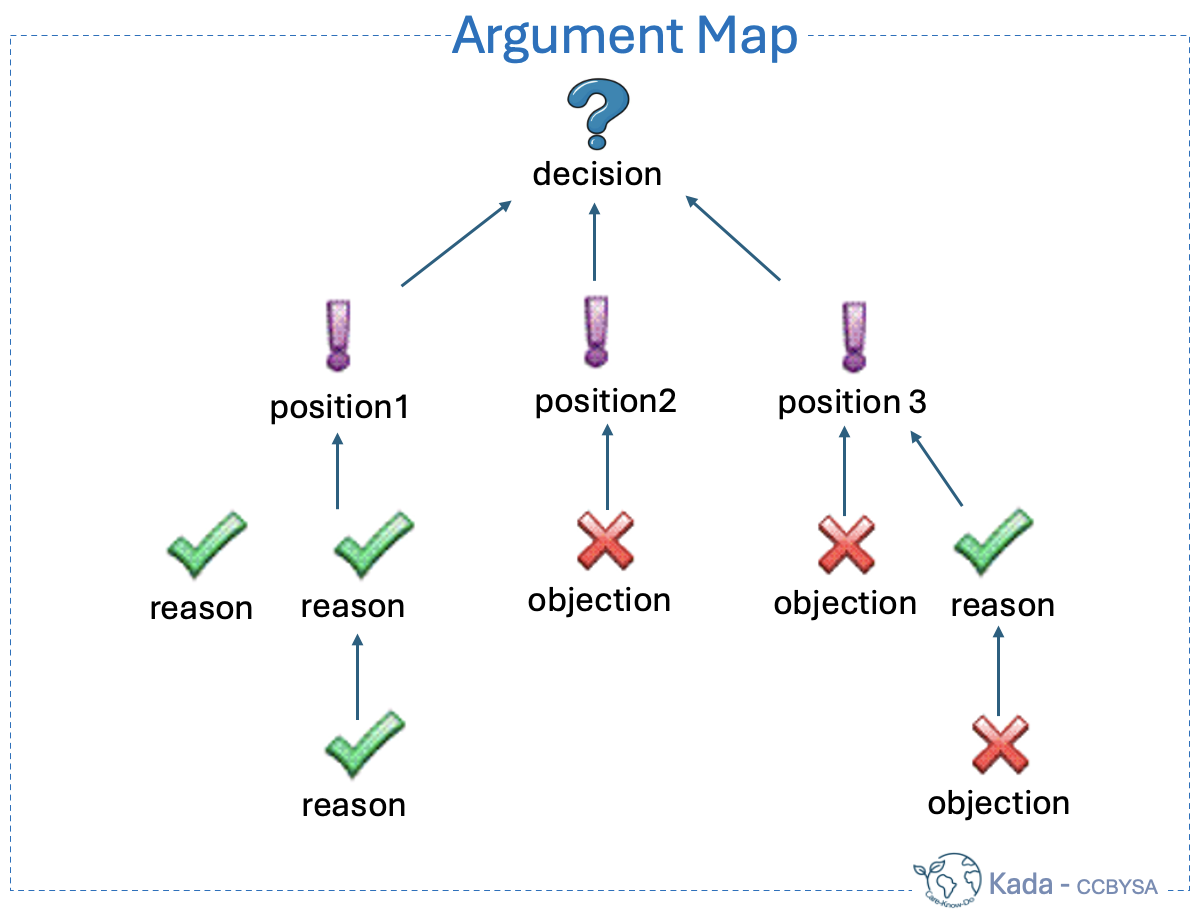Argument mapping is a technique to develop evidence-based thinking using arguments and counterarguments. It was inspired by Wigmore in the 1913s to support learners to connect and visualise the elements of argumentation. It is useful for developing persuasive views based on a main claim or contention connected to assumptions, reasons and objections.

How can we create an argument map?
- Identify the main position representing the contention.
- Connect supporting arguments or reasons for the position, that means pros.
- Include any opposing views or objections as a counterargument, that means cons.
- Incorporate relevant facts, data and assumptions related to both pros and cons.
- Examine how different elements of the argument are logically interconnected.
- Review the argument map and make necessary adjustments.
Argument maps can help learners and researchers
to communicate findings and justify views using evidence.
The applications of argument maps are also diverse: problem solving, critical thinking, and scientific writing. AI mapping tools can facilitate this process with suggestions and evaluation to enrich argumentation.